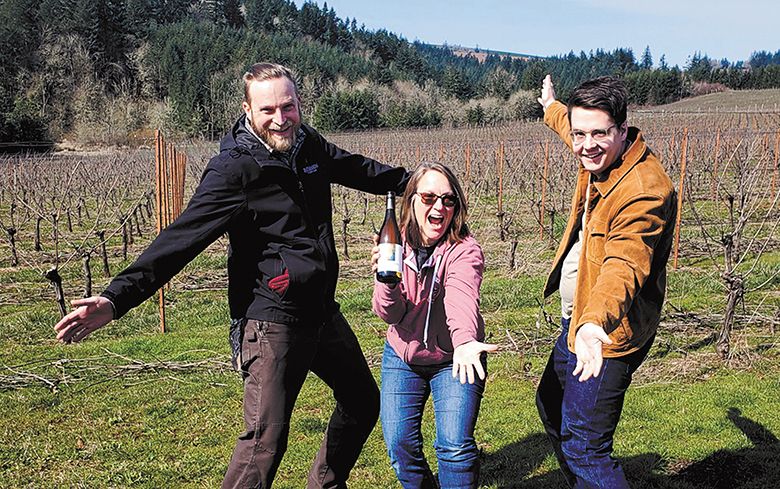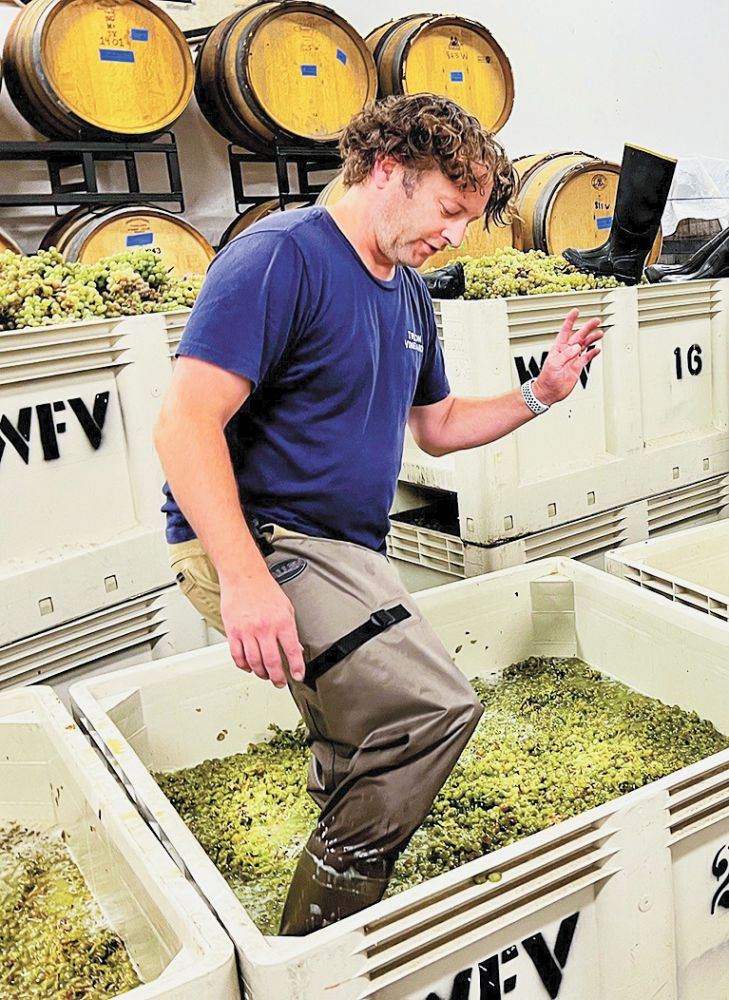TCB with the TTB
Oregon wineries share label approval experiences


By Jessica Zimmer
Over the decades, Oregon wineries have faced challenges getting labels approved for new wine varieties. Success lies in doing research and providing information to the U.S. Treasury’s Alcohol and Tobacco Tax and Trade Bureau, or TTB, about the history of the varietal.
“Using a new grape name comes with risk,” says Earl Jones, founder of Abacela in Roseburg. “In the early 1990s, I relocated specifically to the Umpqua Valley with the sole purpose of growing Tempranillo. I bet Southern Oregon’s climate– similar to Spain– would lead to success.”
The U.S. Bureau of Alcohol, Tobacco, Firearms and Explosives, or ATF, the predecessor to the TTB, preferred the name “Valdepenas.” Yet, it accepted Jones’ request to use the name “Tempranillo” without asking him to submit a petition.
Later, Jones petitioned the ATF to use the name “Bastardo,” also known as Trousseau or Trousseau Noir, one of Abacela’s Port varietals.
“When we decided to bottle Tinta Amarela as a 100 percent varietal red wine, a grape we previously used only in Port production, the ATF required a lengthy petition proving it was a legitimate grape variety. They had never before given label approval for the grape,” recalls Jones.
Today, Abacela uses Bastardo and Tinta Amarela in its Port and 10-Year Tawny Port, two dessert wines made from five traditional Douro grapes. It also makes a 100 percent Tinta Amarela wine with the flavors of cherries and tea leaves.
Craig Camp, winegrower at Troon Vineyard in the Applegate Valley, said Troon grows 20 varieties of wine grapes. The winery makes four wines from the Vermentino variety.
Troon decided to call one of its Vermentino wines “Cuvée Rolle,” as this wine was made in the style traditionally used in Southern France. The TTB allowed Troon to do so because the full name of the wine is “Vermentino, Cuvée Rolle.”
Troon makes this particular Vermentino in the Corsican style. The unoaked wine contains more body than lighter versions of Vermentino grown on the Italian coast.
“This wine has a crisp, refreshing style that is only rich by the standards of Vermentino. For example, it is not as rich as Chardonnay,” said Camp.
Rising early helps
Pattie Björnson, co-founder of Björnson Vineyard in Salem, said her secret to gaining varietal approval was waking up early. When she called the TTB at 6 a.m., she was able to reach TTB officers as they began their workday on the East Coast.
“This is how I got a ‘yes’ for Gouais Blanc, an ancient, nearly extinct white varietal from France. At first, I tried to use the varietal as a fanciful name but was told I couldn’t use a real grape name as a fanciful one. But they also said Gouais Blanc was not on the list of approved varietals, so we couldn’t use it at all,” said Björnson.
She tried again after hours of research with wine books, this time listing three sources in her application. “At first, the paperwork went into a black hole. I was worried because I sent the application in mid-winter and we planned to bottle this wine in spring. Slowly the wheels turned. I kept making early morning phone calls and being very courteous. We got the label approved just in time for bottling,” said Björnson.
Gouais Blanc is an ancient variety consumed primarily by peasants. “The vine yields heavily and has huge clusters. We knew the wine tends to be quite acidic, so we fermented it in concrete to temper it. I’m pleased with our first Gouais Blanc offering. It pairs beautifully with oysters,” said Björnson.
David Adelsheim, founder of Adelsheim Vineyard in Newberg, said the only time he needed approval to use a grape variety name from the TTB was when he produced Auxerrois, a white wine and natural crossing of Pinot Noir and Gouais Blanc. Auxerrois is often grown in areas near the border with France and Germany, like Alsace and Lorraine.
“We made it for approximately 10 years, starting in 2002. It had come in with a group of other clones from Alsace,” said Adelsheim. “We soon realized Auxerrois was not on the TTB’s list of approved grape varieties.” Adelsheim secured approval by furnishing references to the variety with the TTB from wine writers and scientific journals.
“Adelsheim Vineyard stopped growing Auxerrois to concentrate solely on Chardonnay and Pinot Noir. Since planting the vineyard in 1971, we’ve gone from a dozen varieties to two. Our recent Chardonnays are juicy and refreshing, with hints of pear,” said Adelsheim.
Reviewing regulatory history
The confusion about which names winemakers may use is connected with the evolution of federal regulations, according to Richard M. Gahagan, a Fresno-based independent consultant for wineries and wine grape growers. Gahagan is a retired wine technical advisor working for the ATF from 1982 to 2002.
Gahagan explained how name-related questions in the late 1990s began after a February 7, 1996, ATF final rule on wine names. It contained a list of approved grape variety names allowed for American wines. The rule muddied the waters with two additional lists of alternatives allowed only through January 1, 1997, and another, two years later.
Name-related questions in the mid-2000s arose from a 2006 agreement recognizing certain names of origin in U.S. and E.C. markets. In addition, it defined rules for optional labeling elements of U.S. wine sold in Europe.
The TTB oversees label approval to prevent misleading impressions. Wine enthusiasts can assist their favorite wineries by talking to winery staff about potential choices for wine names. This provides wineries with an idea of what guests and customers want to buy, from estate-bottled wines to new varieties and blends.
Jessica Zimmer is a news reporter, attorney, and educator based in northern California. She has worked in journalism for over 20 years. She covers a wide variety of industries, including alcoholic beverage production, transportation, law and the arts.








